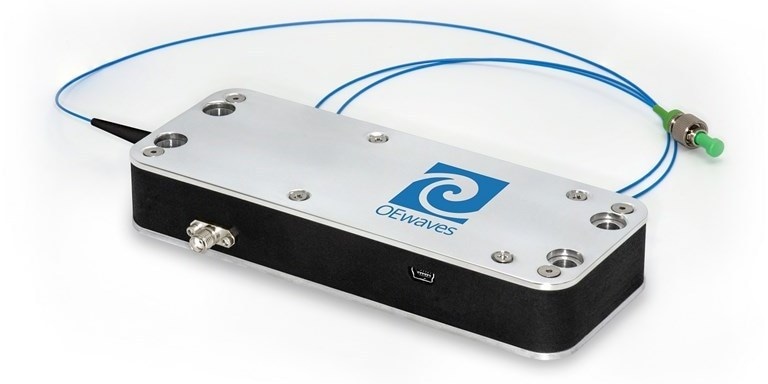Sep 19 2019
Scientists have developed a new laser prototype at the core of the first space-based gravitational wave observatory, called the Laser Interferometer Space Antenna (LISA) mission.
 Prototype laser for the LISA gravitational wave space mission. (Image credit: CSEM)
Prototype laser for the LISA gravitational wave space mission. (Image credit: CSEM)
The new laser developed by the researchers almost fulfills the rigorous requirements specified for LISA’s instrumentation. This major advancement could lead to the success of the aspiring observatory program.
What a motivating challenge it was to realize a laser system with state-of-the-art performances, capable of meeting the stringent reliability requirements of a space mission.
Steve Lecomte, CSEM
CSEM is a Swiss research firm. At The Optical Society’s (OSA) 2019 Laser Congress, Lecomte will present details on the performance of the laser prototype. The event will be held in Vienna, Austria from September 29th to October 3rd, 2019.
LISA mission will complement ground-based gravitational-wave detectors, such as the Laser Interferometer Gravitational-wave Observatory (LIGO) funded by the U.S. National Science Foundation (NSF), by launching a gravitational wave detection system in space.
According to the NSF announcement made in 2016, LIGO had accomplished the world’s first direct visualizations of gravitational waves, which are ripples in the fabric of time and space. A century ago, Albert Einstein had predicted the same gravitational waves in his general theory of relativity.
The LISA and LIGO observatories depend on lasers to identify gravitational waves. Apart from reliability and accuracy needed for any gravitational wave detector, the laser aboard the LISA mission should fulfill additional specifications so that it can be used in space over a long term.
The European Space Agency (ESA), in association with the U.S. National Aeronautics and Space Administration (NASA), is heading the LISA mission.
Exacting Requirements for Precise Measurements
Set to launch in the early 2030s, the LISA mission will include three spacecraft organized in a triangle that stretches to millions of kilometers across. All the three spacecraft will initially send laser beams to and fro and then integrate their signals to detect proof of gravitational waves.
The array of components incorporated in the LISA system should be able to operate individually, perfectly, and together for the mission to be successful. The laser, for its part, should fulfill rigorous requirements in terms of purity, stability, noise, wavelength, power output, and other parameters.
The team created a laser that fulfills virtually all the criteria specified by NASA and ESA. All the electronic and optical components of the laser system can be used with the space environment or they are based on technologies for which there are space-grade components.
The system begins with a self-injection locked laser called a seed laser. This is the first packaged laser achieved at the mission-specified wavelength of 1064 nm. The seed laser emits light, which is then fed into a core-pumped Yb-doped fiber amplifier (YDFA), which increases the average power from 12 to 46 MW. A small portion of the amplified light is subsequently focused on an optical reference cavity, which enhances the laser’s spectral stability and purity by orders of magnitude.
Following this, the primary part of the light crosses a phase-modulator, which, in turn, introduces features. With the help of these features, the mission will compare the signals across the three spacecraft via a process called interferometry. In the end, another core-pumped YDFA as well as a double-clad large mode area YDFA will increase the signal to nearly 3 W. The power output is stabilized with additional components.
Confirming Performance
The researchers developed an exclusive test station to evaluate the performance of their prototype laser system. As references, the team utilized an active H-maser, an optical frequency comb, a cavity-stabilized ultra-narrow 1560-nm laser, and temperature-stabilized low-drift photodetectors to measure the stability of the amplitude and frequency of the laser system.
The tests revealed compliance with LISA stipulations across the entire frequency range, with exceptions above 5 MHz and below 1 MHz. Excellent compliance was also observed with respect to noise.
For tests that showed slight deviations from LISA specifications, the scientists have detected the potential causes and recommended solutions to further improve the system. Such solutions include a few technical enhancements of the seed laser, for example, introducing a drop port to the resonator in order to decrease high-frequency noise.
While a launch date shortly after 2030 might appear far away, there is still substantial technological development to be performed. The team is ready to further contribute to this exciting endeavor.
Steve Lecomte, CSEM